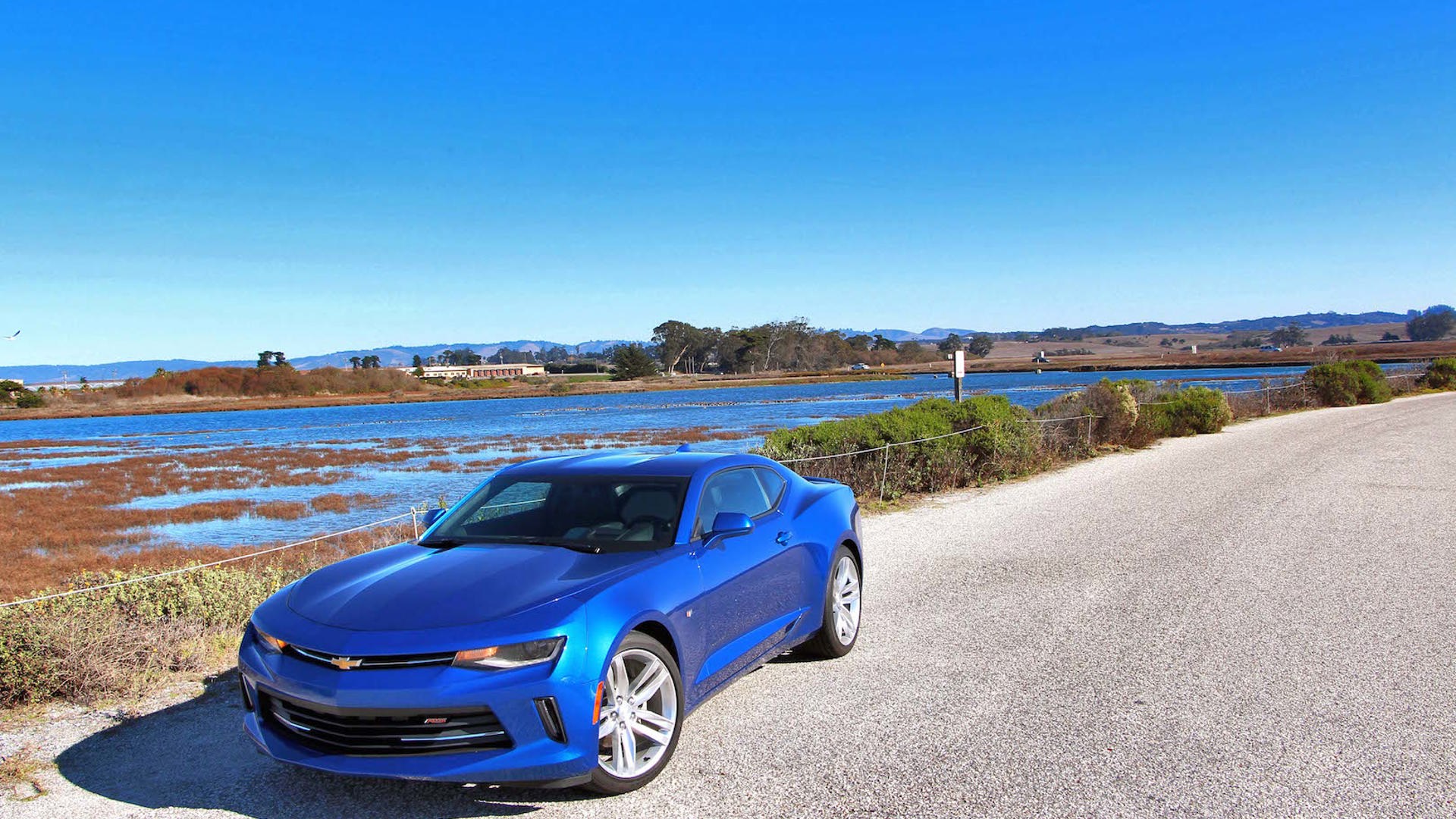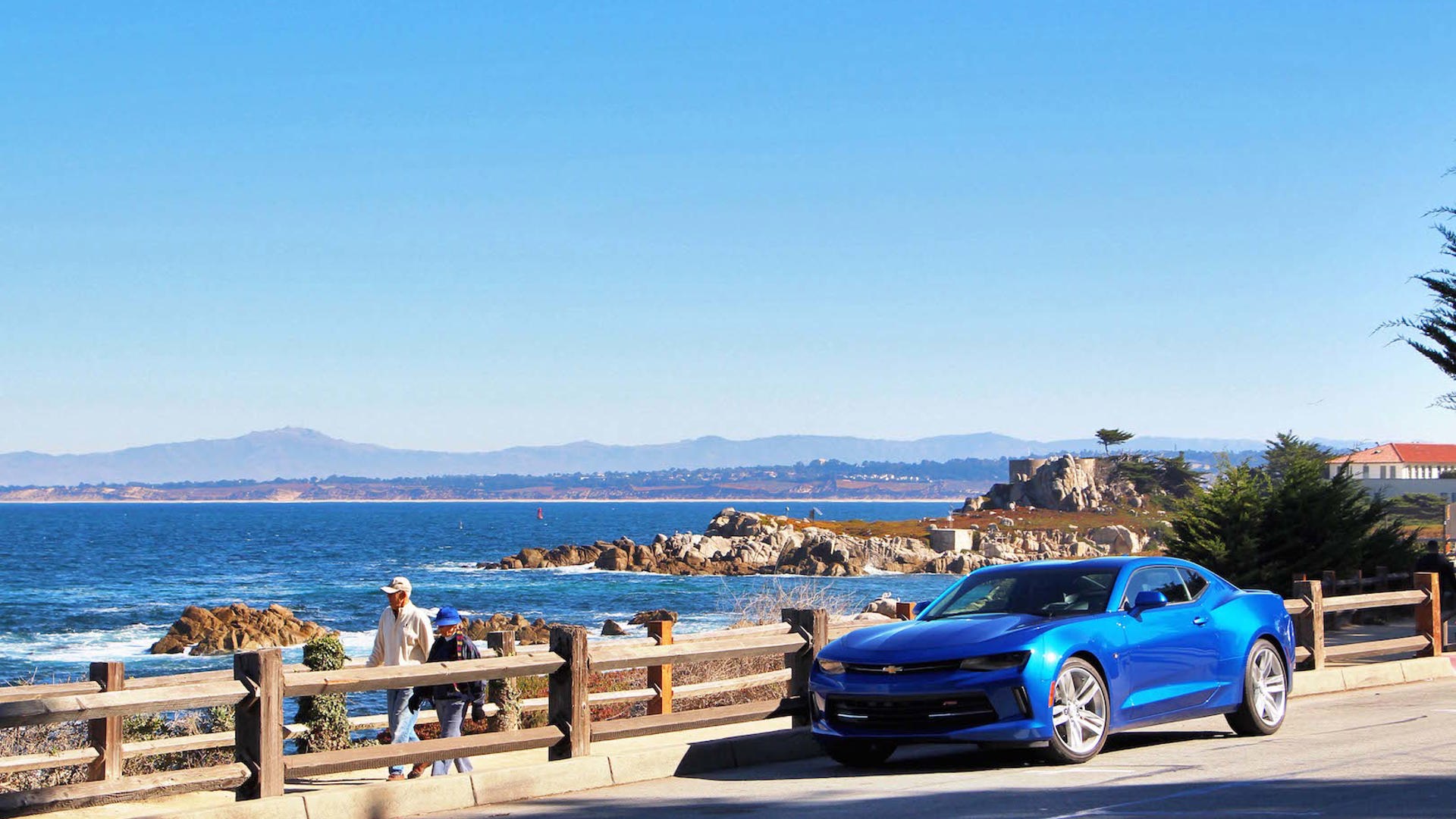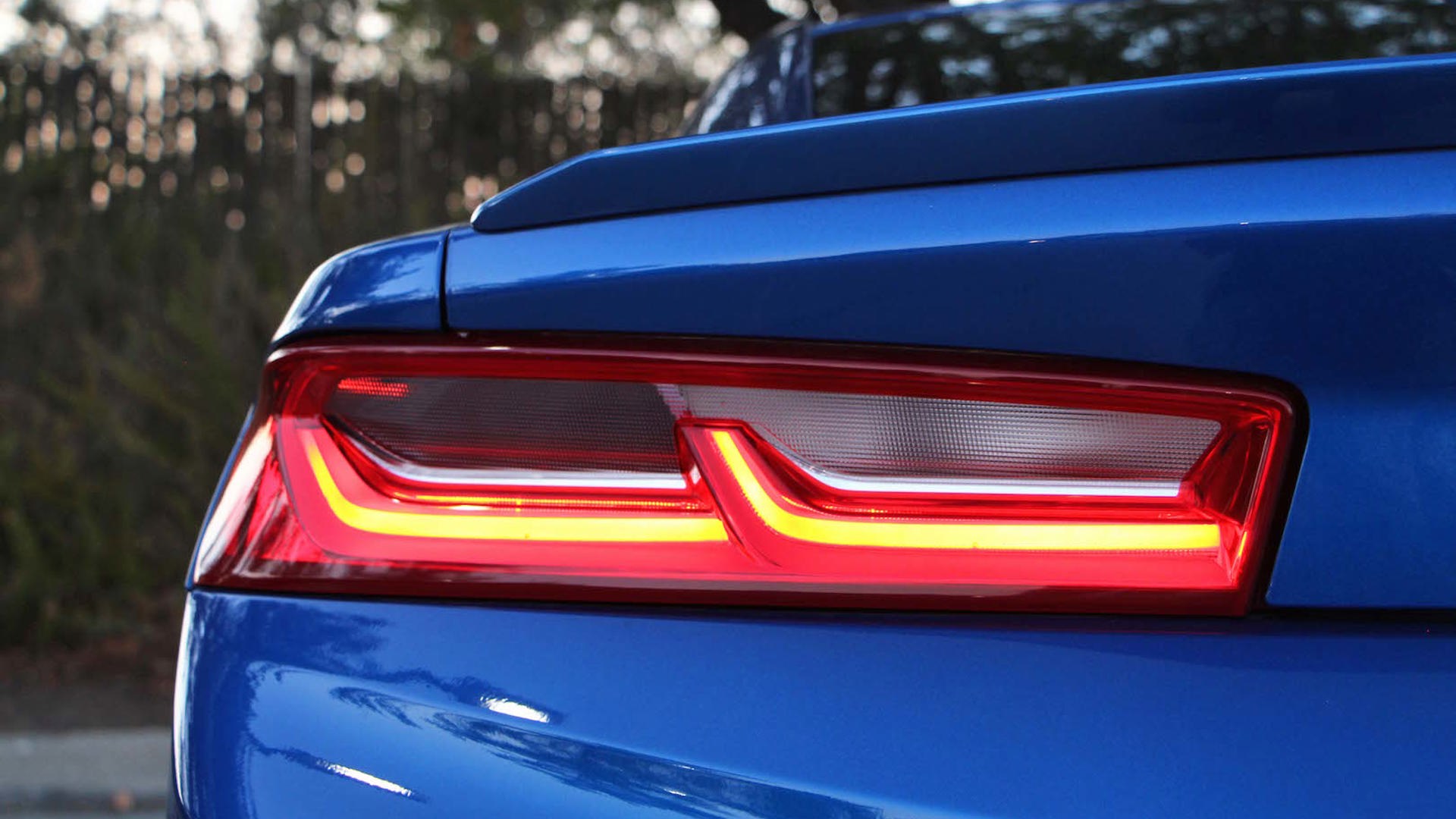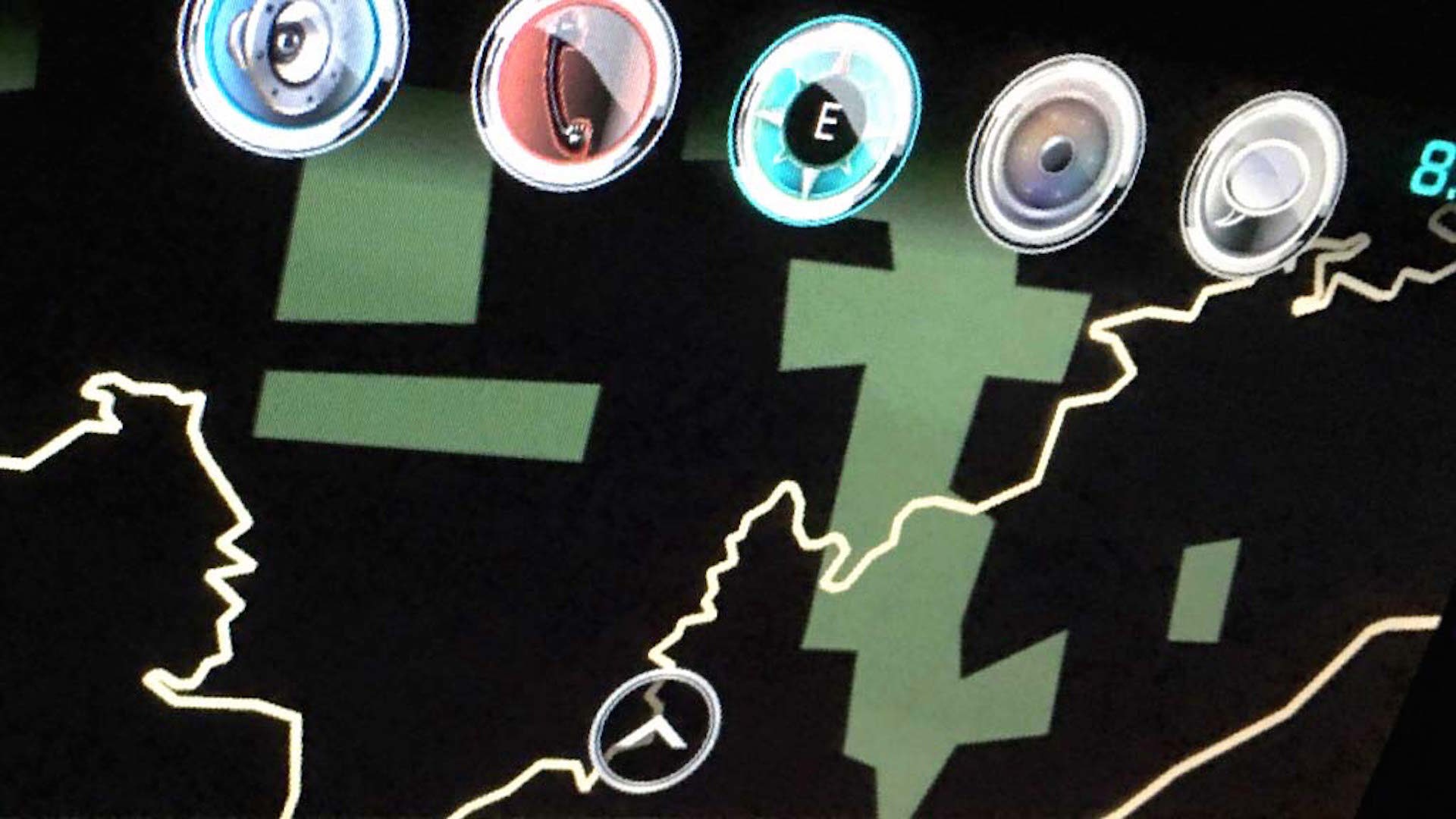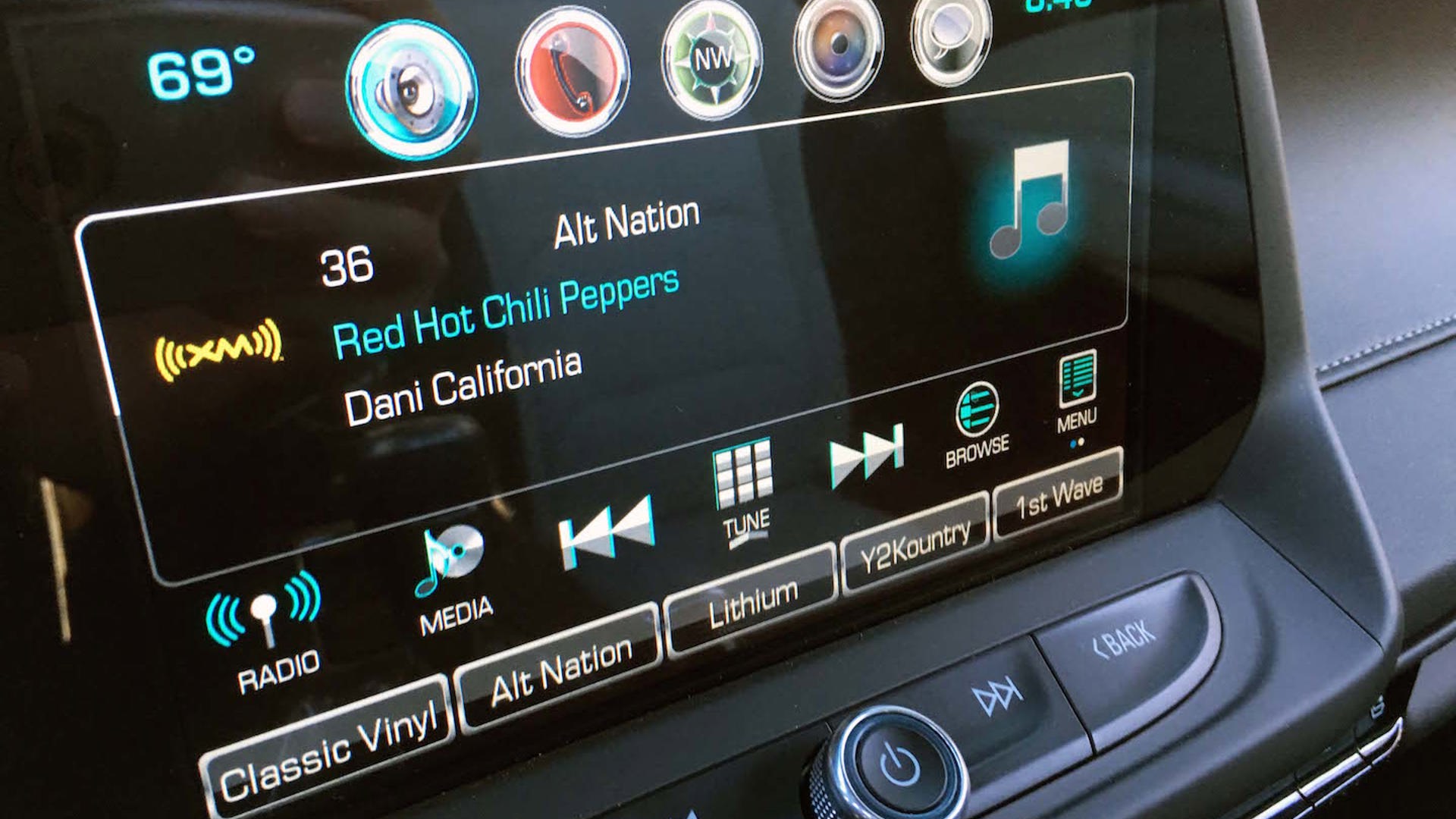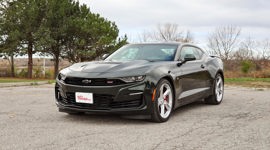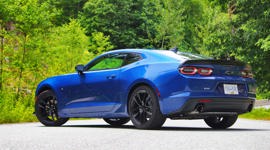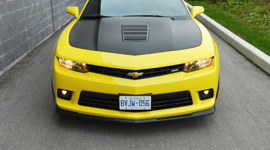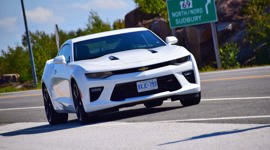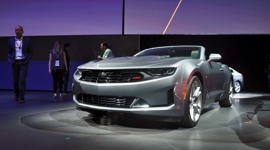It kinda’ snuck up on me.
Somewhere between San Jose and Santa Monica, I discovered just how good the new 2016 Camaro is.
Now, there was no denying that the gen-5 Camaro Z/28 was already a beast of mythological track capabilities, but the few Camaros I’d had a chance to pilot were flawed, be it a tacky interior, a too-blockish exterior, and dynamics and a driving experience that just didn’t quite come together. Or perhaps it just didn’t speak to me. I’m no horse whisperer, but there was always just one pony car that really spoke to me, and that was the Boss 302. Well, move over Boss, because the Camaro has some newfound giddy up that is more than a match.
It all starts with how much less Camaro there is. Less size, less weight, less money. Okay, less money isn’t part of the Camaro, but it’s shocking considering the Camaro has transitioned to a premium Alpha architecture shared with the Cadillac ATS (and stretched for the CTS line as well), but sharing a better platform and powertrains means GM can spread the costs over several brands and models. Nonetheless, the price of entry to Camaro ownership is now $28,245 in Canada, equipped with a 2.0L turbo and six-speed manual transmission in 1LT trim (cheaper even than last year’s 1LS entry trim at $29,095 and over $2K cheaper than the 2015 1LT at $30,820). Granted, last year’s base car had a V6, and upgrade which will cost you about $1,500 over the 2.0T, and while you gain power with that engine, you lose torque…
Road Trip: 2016 Chevrolet Camaro on California’s PCH
At the other end of the powertrain spectrum, prices have climbed. The 1SS Coupe with the big-dog V8 goes from $39,390 to $42,150 but power and torque are way up, and combined with lower weight, better equipment and the jump in performance, it’s hard to fault GM for that kind of price increase.
Speaking of performance, let’s get look at the early returns. The base 2.0L turbo is an SAE-certified 275 hp and 295 lb-ft of torque with a six-speed manual transmission is the base transmission with each of the three engine options. Weight comes in at 1,514 kg with the eight-speed automatic, and GM estimates the car can hit 60 mph (96 km/h) in under six seconds no matter the transmission (5.4 in manual, 5.5 with the auto).
Move over Boss, because the Camaro has some newfound giddy up that is more than a match.
The V6 weighs more at 1,567 kg, has less torque at 284 lb-ft, but the its 335 hp help it knock off 0-60 mph times of 5.2 and 5.1 with the manual and auto transmissions. This is the car we spent the bulk of our time driving, the blue one in pictures you see here. What you won’t see in pictures or find in the numbers is the way it sounds, and the V6’s greatest asset over its V6 Mustang rival is an unquestionably richer exhaust note: this thing sounds like a proper V, and enough rumble that might make some think there is a V8 under hood.
While I only drove the automatic, the V6 also felt well matched to the chassis’ weight and the transmission had enough gears to make use of that 335 hp and 284 lb-ft, its light weight making it easier to get rolling, and the transmission holding gears in sport mode or when it detects heavy throttle. In less frantic Touring mode, the transmission quickly moves up through the gears and holds them a bit longer, asking for a bit more throttle angle before downshifting when cruising along on the highway. In Sport mode, it requires only a feathering of throttle or braking into a corner to drop one or two gears in short order. The auto is smart and quick and smooth, and I experienced none of the lurching or confusion in encountered with the six-speed auto paired with this same V6 in the ATS Coupe.
But the V8, oh dear, now that is some trouble. Chevrolet tapped the new LT1 6.2L V8 developed for no less than the Corvette, and 455 hp and a matching 455 lb-ft for its svelte 1,671 kg (remember, the previous-gen SS V8 weighed 100 kg more and made 30 less hp). Despite its origins, 20 percent of the components are specific to the Camaro including new, tubular “tri-Y” exhaust manifolds along with shared features like variable valve timing, direct injection and aluminum block and cylinder heads. When equipped with the automatic, it also has cylinder deactivation (as do automatic-equipped V6s) for increased efficiency. But you don’t care about efficiency, do you? Not if you’re thinking V8. You want to know how fast it goes, right?
GM suggests the V8 gets you to 60 mph (96 km/h) in four seconds flat with the automatic, clearing the 1/4 mile in 12.5 seconds at 116 mph (187 km/h), and with a manual in 4.3, and 12.5s 1/4 mile at 115 mph (185 km/h). Even with barely the effort to put it in Track mode (a special setting for sportier SS models), not feeling the need to even disable traction control, the V8 lights up the rear tires (20-inches all around with Goodyear Eagle F1 Asymmetric 3 rubber) like a switch, allowing generous wheelspin and a bit of mild sidestepping that quickly turns into a catapult release and seat-pinning acceleration. With this slightly obscene power and the big but sophisticated V8 lump over the front end, the V8 felt slightly more dicey on public roads – the temptation to overdose on that power is too great, while the V6 seems to be just the amount that the chassis and tires can effortlessly handle the power building across the rev range to go along with the traction available form this exclusively rear-drive setup. The SS simply feels omnipotent, with more than enough power and torque everywhere that it is really the explosive sounds and addictive roars of a classic V8 that you’ll be chasing.
The expected ZL1 and Z/28 model will surely be completely bonkers, offering strip and track levels of performance out of the box, but this V6 is that right mixture of power and grip that make a superb driver’s car. I’d still get the V8 of course, because V8, and because that little bit of insanity and wildness is the appeal of any pony car in my mind. Having spent the majority of time in the V6, though, I came to appreciate it as an uncompromising sports car that will take the fight to European sports cars, breaking out of the Camaro vs Mustang rivalry in a way that builds on the most recent Mustang’s leap to fully independent suspension.
Remember, the Camaro is riding on the ATS’s Alpha platform, a car that many affirm has unseated the 3 Series for pure driving pleasure in the compact sport luxury segment – its back seats are useless, but damn, if it’s not a driver’s car through and through. This platform marks a 28 percent improvement in chassis stiffness in addition to the lion’s share of those aforementioned weight savings, improving everything from acceleration and handling to braking. It’s also flexible enough for the needs of the ATS and CTS and now the Camaro coupe and convertible, its sophistication and adaptability achieved through millions of hours of computational modeling that allows GM to leverage its quality across various models.
Camaro Chief Engineer Al Oppenheiser frames it perfectly from a performance and business sense: “Every Camaro model offers exceptional chassis strength and rigidity, but the modular design made the architecture more adaptable and mass-efficient, because we didn’t have to compensate for the unique demands of, say, the SS convertible when building a 2.0L Turbo coupe. The result was an elegant engineering solution: 12 chassis components that could be combined to meet the structural requirements of each specific model, without adding unnecessary mass to other models.” The increased rigidity also benefits steering and suspension calibration, which no longer have to account for chassis flex.
No question in my mind that they got the steering and suspension right. All Camaros ride on MacPherson front suspension with aluminum links and independent five-link rears composed of steel, but with “lightening holes” helping to save and distribute weight where it does not compromise integrity or function, saving 12 kg in weight in the suspension bits alone. The suspension balances the need for basic comfort in this popular vehicle with dedication to its sporting mission. The ride is more than adequately confortable on average roads and settled and smooth on the highway, but as a shorter wheelbase sports car, the worse the road gets, the more you feel it even while it manages to smooth out some of the sharpness of the impacts. SS models can be outfitted with Magnetic Ride Control dampers that stiffen the ride as you select more sporting drive settings in the Drive Mode Selector.
That is more than acceptable for what feels like an uncompromising cornering attitude, with next to no lean in aggressive driving on public roads, and only mild dip of the nose under hard braking, which is a benefit to help gauge weight transfer when really attacking corners. If the balance isn’t 50:50, it feels close enough as to make no difference, with a textbook ability to induce understeer or oversteer, but no proclivity to suffer from either when otherwise engaged in quick and eager changes of direction.
All the while, the helm is faithful and true, yielding turn-in precisely as measured and returning an adequate feel of the front tires’ position and progressive loss of traction. The weight is substantial enough without being a burden in city driving or parking maneuvers. I wish I could report on the clutch and shifter’s throws, but we did not get an opportunity to test one with either powertrain, so that will have to wait for a report on home soil.
The one frustration I had in the Camaro was that bunker-like visibility. In mild driving and parking it’s something you can work around as it is what’s behind you and the back-up camera and parking sensors help out when backing into a spot, but the thick A pillars obscure forward vision even if the hood does not seem to be as much of an obstruction and I, for one, lamented the lack adaptive cornering lights on the last canyon road I carved well after dark.
Now, GM spent some time telling us all about the new electronics, connectivity and slick new screens, and they’re wonderful. Unfortunately, they seem somewhat meaningless when considered against the driving dynamics that I was able to experience through the sinuous coastal drives, mountain passes and canyon roads of California that I was lucky enough to experience. The Camaro can cruise along the highway with stereo blaring and road slipping by underneath as unforgettable as any family sedan, but when the road winds into a map of squiggles and our clichéd search for driver’s roads finds a partner in a driver’s car bred and built to perfection for those roads, the adrenaline and the clarity of just driving empty one’s mind of the pulse of technology.
I will say that it is pretty neat that the Camaro’s 4G LTE wifi network meant we were able to post snapshots of each milestone in our adventure to our seven adoring Instagram fans, and the Apple Carplay meant I could view the far more precise mapping from my phone rather than the built-in nav and the nuisance of OnStar directions hiding the map. For posterity, I should mention that the interior quality is miraculously better than the previous generation, and the seats are both comfortable for the long haul and adequate for hard driving, though a day at the track would likely exceed their ability to support you.
| Warranty: 3 years/60,000 km; 5 years/160,000 km powertrain; 6 years/160,000 km corrosion perforation; 5 years/160,000 km roadside assistance Competitors: Audi A5/S5/RS 5 BMW 4 Series/M4 Dodge Challenger Ford Mustang Infiniti Q60 Lexus RC Mercedes-Benz C-Class Coupe Porsche Cayman |
So yeah, technology and stuff is cool, but the Camaro is a sports car and it does the sports car stuff pretty damn well, too. It can do the everyday stuff like most any old car, but if there is no plane to catch or work to commute to, the 2016 Camaro promises to be a car that can temporarily free you from the mundane and the ordinary, it can connect with the road and excel in the application of brute force or unravel the code of the road under the wheels true to the program that your hands and feet input through the wheel and pedals. It’s a digital machine that fulfills an analogue promise.
Pricing: 2016 Chevrolet Camaro
1LT Coupe: $28,245
2LT Coupe: $35,150
1SS Coupe: $42,150
2SS Coupe: $47,150
Destination: $1,650
A/C Tax: $100




